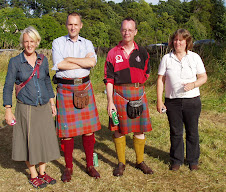The yarn arrived and I have embarked on the edging of Gudrun’s
Hansel hap. It was like waiting for Father Christmas. I’ve done six repeats so
far. There are 14 on each side.
It was clumsy and awkward at first, getting easier now. Soon
the danger will be thinking about something else and losing my place.
The edging could scarcely be simpler, but is rather wide.
Eight stitches at the narrowest, rising to 16. I think it not unlikely that I’ll
need more yarn. The thing is to move briskly forward, as I’ve said before, and
see how long this first ball lasts. It looks very colourful, is all I can say
so far. I’ll take a picture of it tomorrow, along with our Tuesday avocado
tree.
Quinn, thank you for your comment, and for the pointer to your blog I did find a couple of problems with the Craftsy pattern, although
they don’t arise until the borders are finished. The pattern has been on
Craftsy (or whatever it’s called these days) for years – how could mistakes
have survived? Maybe I’ve got it wrong.
a) When
you finish the borders, the instructions say to leave the yarn attached. I didn’t
see how that would work, since the next instruction is to cast on 8 stitches
using the long-tail cast on, on a separate dp needle. And when you watch the
Craftsy class, there is Gudrun breaking the yarn, plain as a pikestaff.
b) When
the borders are finished, before the decrease row, the pattern says that there
are 132 stitches on each side. You then decrease with a rather nerve-wracking k1
*K5, k2tog, k4, k2tog* 10 times k1. When it came out wrong on the first side, I
blamed myself. When it came out the same wrong on the second side, I went back
and counted the squares on the pattern chart. There are 130 stitches, not 132.
The decrease instructions don’t quite fit, for 130. But the result, however
arrived at, is right: you want 112 stitches on each side. Each edging repeat
eats 8 stitches: 14 repeats per side.
Non-knit
I walked around the garden again today, in order to take a
picture of the fallen eucalyptus for you. The roots, if you can discern them in
the distance, look to me as if they were broken off too short to provide any
hope of resuscitation. The gardeners told me yesterday that they thought it had
outgrown its strength, so to speak:
Things continue to go from bad to worse in “The Three Clerks”.
You’re absolutely right, Shandy, there’s a mock novel in the middle – Charlie hoping
to make his fortune with his pen. I speed-read it, this time.




Eucalptus trees can be a bit awkward - a neighbour had one that fell in half in a storm. He asked OH to help get it trimmed down to the good bits - the wood produced a nasty paste which set instantly and completely wrecked the chain of OH's chain saw - and, no he didn't offer to contribute to help with the cost of replacement.
ReplyDeleteJean, I hope you will take a look at Quinn's blog sometimes; she draws and does water color and takes photos and has some very photogenic goats. I'd be delighted if I could bring the two of you together, as you are my two favorite blogs.
ReplyDeleteDear Jean, thank you so very much for describing in detail that issue with the 130/132 stitch number! That is exactly the kind of dizzy-making problem that makes me doubt my sanity, and - if it's early in a pattern - rip the whole thing out and either cast on again and dutifully record every row to avoid the same problem or else consign the pattern to the Never Again list. Coming near the end of a pattern it would be even worse! Thanks for giving me a heads-up well in advance :)
ReplyDeleteThe decrease row, as you wrote it, uses 13 stitches 10 times, plus 1 knit at the beginning and 1 knit at the end for 132.
ReplyDeleteHi Jean, is it possible that the pattern chart doesn't include the edge/selvedge stitches? The math works as weavinfool says - 130 (13X10) plus two edge knit stitches (132), then there are 20 stitches decreased, (K2tog twice X 10) which brings you to 112 (132-20).
ReplyDeleteAbout the pattern chart showing 130 squares: I'm guessing, but maybe whoever wrote the instructions saw a version of the chart that had placeholder squares at the beginning and end, and thought they were supposed to be stitches.
ReplyDeleteAs you observed, a decrease row would be simply *k5, k2tog, k4, k2tog* 10 times, making 130 sts into 112 sts.
There are days I feel I have outgrown my strength!
ReplyDelete